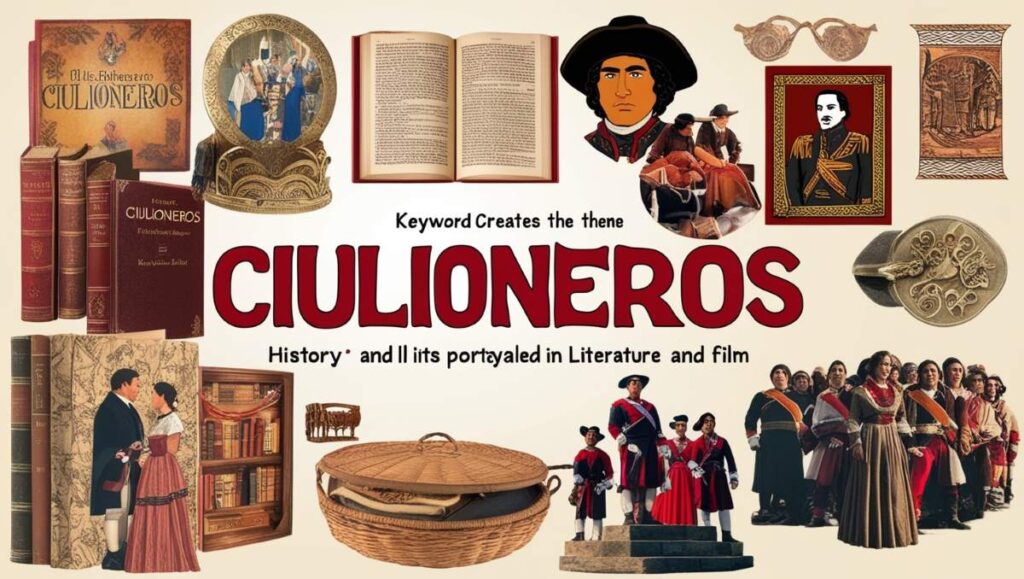The term “ciulioneros” might not be familiar to many, but their rich history and cultural significance are woven into the fabric of society. Originating from a distinct community with roots in Mexico, ciulioneros have often been portrayed through various lenses in literature and film. These representations shape how they are perceived today.
Yet, as we dive deeper into popular media’s portrayal of ciulioneros, we uncover layers of stereotypes and misconceptions that persist. From thrilling novels to impactful films, the narrative surrounding this unique group is complex and multifaceted. It’s time to explore how these portrayals affect societal views on ciulioneros—both positively and negatively—and highlight why accurate representation matters for minority groups like them. Join us on this journey through stories that reflect reality while also challenging it!
Common Stereotypes and Misconceptions about Ciulioneros
Ciulioneros often face a variety of stereotypes that can cloud public perception. One prevalent misconception is that they are solely depicted as troublemakers or outlaws. This narrow view neglects the rich cultural heritage and contributions of Ciulioneros to society.
Another stereotype paints them as overly superstitious, which oversimplifies their beliefs and traditions. While spirituality plays a role in many communities, it’s just one facet of their identity.
Additionally, some portrayals suggest that all Ciulioneros share the same experiences and values. In reality, there’s immense diversity within this group, influenced by geography, history, and individual life stories.
These stereotypes not only misrepresent Ciulioneros but also perpetuate harmful biases across cultures. Understanding these misconceptions is crucial for fostering genuine connections and appreciation for their true narratives.
Representation of Ciulioneros in Literature: Examples of Famous Works
Ciulioneros have made their mark in literature, often serving as symbols of resilience and cultural richness. Works like “La Tierra de los Ciulioneros” explore their deep-rooted traditions and values. Through vivid storytelling, authors shed light on their unique lifestyles.
Another notable example is the poetry of renowned author Elena Córdova. Her verses capture the spirit and struggles of ciulionero communities, bringing readers closer to their experiences. This emotional connection fosters understanding and appreciation for a culture that remains largely underrepresented.
In contrast, some novels perpetuate stereotypes. These works tend to focus on conflict or poverty without acknowledging the diverse aspects of ciulionero life. Such portrayals can contribute to misconceptions rather than provide a balanced view.
Literature plays a vital role in shaping perceptions about minority groups like the ciulioneros, revealing both beauty and complexity within these narratives.
Portrayal of Ciulioneros in Film and Television: Positive and Negative Depictions
The portrayal of ciulioneros in film and television is a mixed bag. On one hand, some productions highlight their rich cultural heritage and deep-rooted traditions. These representations often celebrate the community’s connection to nature and their unique way of life.
Conversely, there are negative depictions that lean heavily on stereotypes. Films may depict ciulioneros as mystical or primitive, overlooking their modern realities and contributions to society. Such portrayals can perpetuate misunderstandings about this vibrant group.
Documentaries sometimes offer a more nuanced perspective, showcasing real-life stories of ciulioneros striving for recognition and respect in today’s world. However, these narratives often struggle against dominant media tropes that overshadow authentic voices.
As viewers consume these narratives, they shape perceptions—both good and bad—about ciulioneros within broader societal contexts. The need for balanced representation remains crucial in changing outdated views while celebrating diversity.
Impact on the Perception of Ciulioneros in Society
The portrayal of ciulioneros in media significantly shapes societal perceptions. When they are depicted with depth and nuance, it fosters understanding and appreciation for their culture.
Conversely, negative or simplistic portrayals can reinforce harmful stereotypes. These images often lead to misunderstandings about the richness of ciulionero traditions and lifestyles.
As stories spread through literature and film, they influence public opinion. The way ciulioneros are represented directly affects how they are treated in everyday life.
Positive representation encourages dialogue and curiosity, helping bridge cultural divides. It opens doors for education around their history and values.
When communities see authentic representations of themselves on screen or in print, it boosts pride among members while also inviting others to learn more about them. This exchange enriches society as a whole by promoting diversity and inclusion.
The Importance of Accurate Representation in Media for Minority Groups
Accurate representation in media holds tremendous power. For minority groups, it shapes identity and community perception. When portrayed authentically, characters become relatable figures that inspire pride and resilience.
Misrepresentation can lead to harmful stereotypes. These distorted images fuel prejudice and misunderstanding. They strip away the richness of diverse cultures, reducing them to clichés or caricatures.
Positive portrayals foster empathy among audiences. They encourage understanding, bridging gaps between different communities. Authentic narratives allow viewers to connect with experiences outside their own.
When media reflects true diversity, it empowers individuals within those groups. Representation matters not just for visibility but also for validation. Everyone deserves to see themselves reflected in stories – it’s a fundamental aspect of human connection and recognition in society’s fabric.
Engaging with accurate depictions changes conversations surrounding race and culture for the betterment of all communities involved.
Conclusion:
The portrayal of ciulioneros in popular media has a significant impact on societal perceptions. This group, rich in culture and history, often faces stereotypes that overshadow their true identity. Literature and film serve as powerful mediums for shaping these views.
Accurate representation is crucial for minority groups like the ciulioneros. When stories reflect authentic experiences, they foster understanding and empathy. Conversely, negative depictions can reinforce harmful stereotypes that affect how society interacts with this community.
As we navigate through various narratives about the ciulioneros, it becomes essential to advocate for more nuanced portrayals. By doing so, we not only honor their heritage but also contribute to a broader conversation about diversity in media. A richer understanding will pave the way for a future where all cultures are celebrated rather than confined to simplistic representations.



